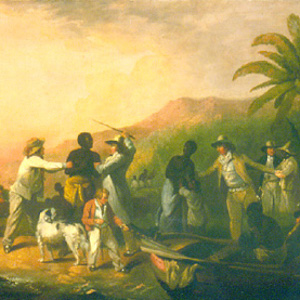Imperial/ Colonial
Antislavery Agitation: Abbé Raynal, Philosophical and Political History of the Settlements and Trade of the Europeans in the East and West Indies (1770)
Abbé Guillaume–Thomas Raynal (1711–96), known by his clerical title [abbé refers to ecclesiastical training], first published his multivolume history of European colonization anonymously in French in 1770.
Islamic Empire: Travel Narrative, Lady Mary Wortley Montagu
In the 18th century, European travelers began to enjoy increased access to international destinations, and the Ottoman Empire was a particular favorite for many.
Declaration of Independence, 1776
The author of the Declaration of Independence, Thomas Jefferson (1743–1826), was deeply influenced by the European Enlightenment. He spent many years in Paris and was just as much at home among European intellectuals as he was on his plantation in Virginia.

The Huejotzingo Codex of 1531
The Huexotzinco Codex (Huexotzinco Codex) is an eight-sheet legal document from sixteenth-century New Spain. The document is a part of the testimony by the Nahua people from Huexotzinco in a legal case against representatives of the Spanish colonial government in Mexico.

Execrable Human Traffick, or The Affectionate Slaves
This reproduction of a painting by George Morland (1789) has lurid colors and shows the sale of an enslaved person.

Toussaint L’Ouverture
A slave inspired by the French Revolution’s egalitarianism, Toussaint saw himself as French and struggled for French control of the island of Saint Domingue. Nonetheless, he had no intention of letting whites rule, for he wanted blacks to control their own destinies.

The Mode of Training Blood Hounds in St. Domingo
This image reveals grotesque mistreatment of blacks even during training exercises. Here a French cavalryman (chasseur) plans to use someone as a live prey for hunting dogs.

The Mode of Exterminating the Black Army as Practised by the French
The fighting between the French and the Haitians was very bloody. When the French tried to put down Toussaint in 1802, it took them some five months with an expeditionary force of 23,000. Supplied by locals, the French seized the towns, gradually extending their control to the countryside.

Revenge Taken by the Black Army for the Cruelties Practised on Them by the French
This execution in Haiti simply suspends the French officer in the air, slowly strangling him to death. His struggles, emphasized by the convulsing legs, reveal the hatred visited on opponents, themselves guilty of so many atrocities.

The Royal and Imperial Family of Napoleon
The remainder of the text on this image reads: Emperor of the French, King of Italy, and Protector of the Confederation of the Rhine. The military flags make clear the connection between military conquest and imperial glory.